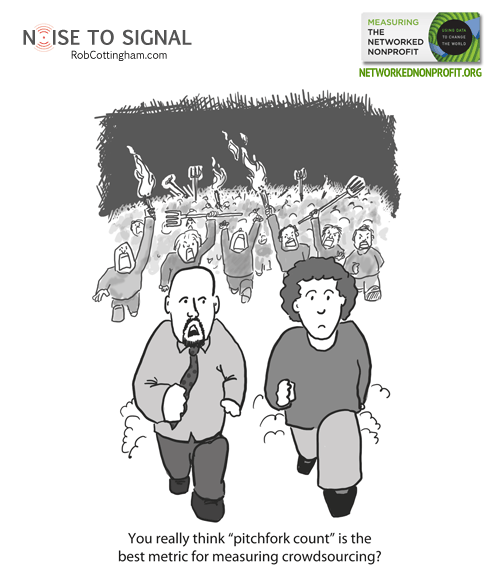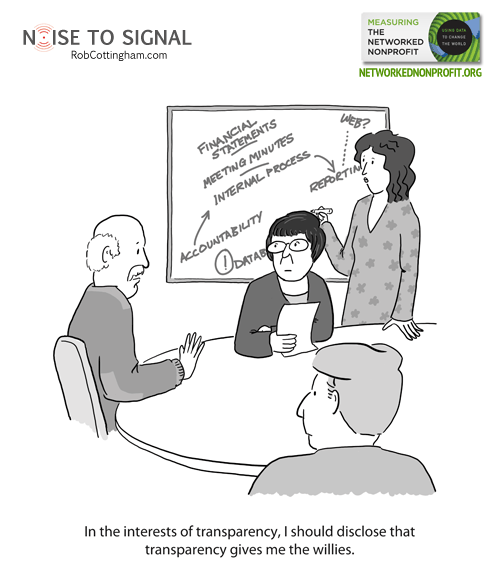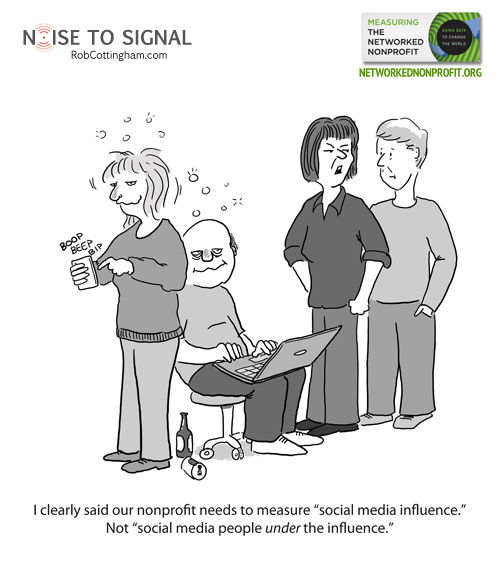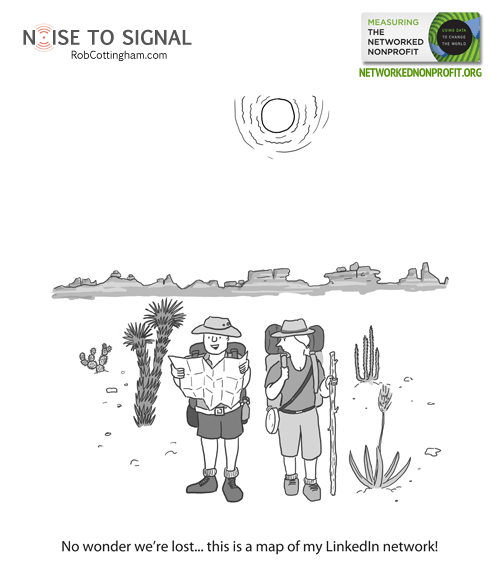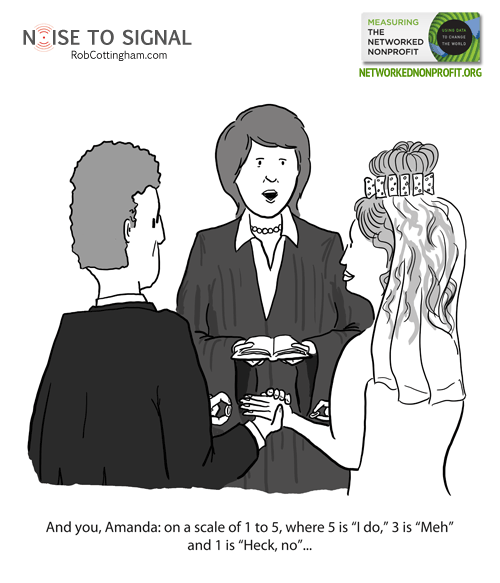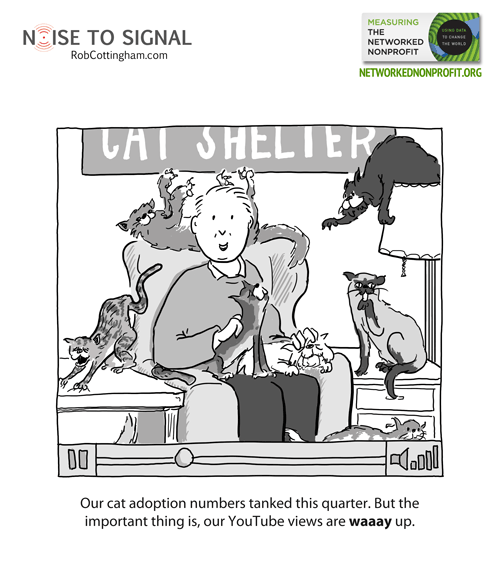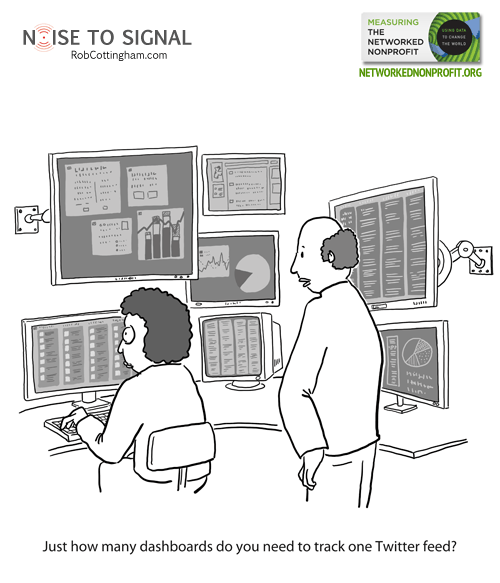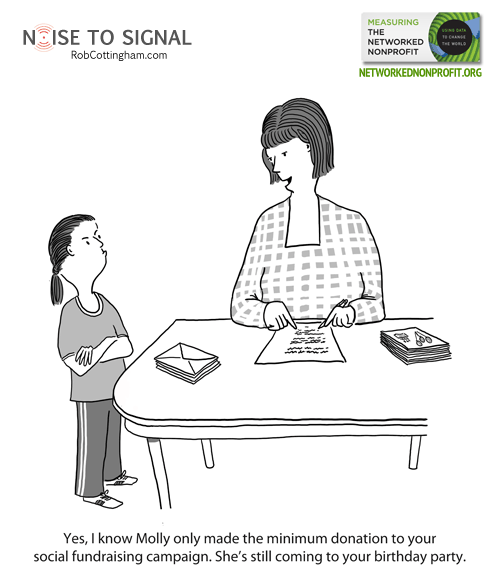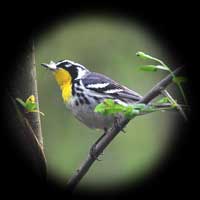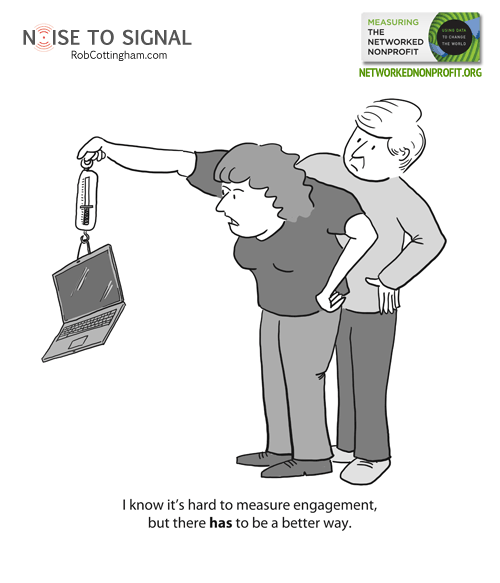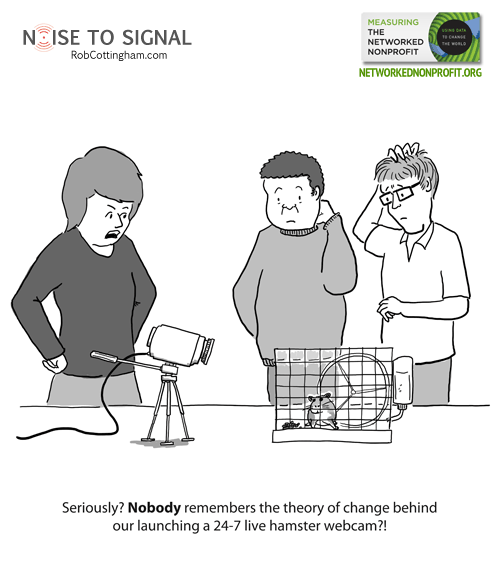Over the past few weeks, I’ve been posting cartoons I drew for Measuring the Networked Nonprofit: Using Data to Change the World, by Beth Kanter and Katie Delahaye Paine. I blogged about the book a while ago on Social Signal, explaining why I love it.
This is the final cartoon in the series. So go buy a copy right now so Katie and Beth will have to write another book! And then make effective measurement one of your new year’s resolutions.
>>> *** <<<
Chapter 14 is the conclusion, and it’s both the most inspiring and the scariest part of the book. Inspiring, because it’s about your organization’s fundamental goals. And scary, because it’s about whether you’re achieving them – or, in the inspired words of a New Yorker cartoon, whether it’s “just so much pointing and clicking.”
Maybe that’s ultimately why so many of us still resist measurement. The warm, furry comfort of thinking we might be making progress is a lot more alluring than the threat of cold, clammy certainty that we’ve been spinning our wheels. Not that we’d make that calculation consciously; it just makes us that much more willing to postpone thinking about something as big and daunting as a measurement strategy.
Which is why Beth and Katie’s book is important. Really important.
It’s important because it breaks the enormous idea of a measurement strategy into far more manageable pieces, each with its own practical steps and potential wins. And for managers and leaders who can never seem to set aside a huge chunk of time and attention, that means a chance to at least take the first step, and then the second… until you’ve made enough progress to make a more ambitious commitment to measurement possible. (Crawl, walk, run, fly, as Beth says.)
And it’s important because while we do need a little fear to push us — when the monster in the closet is real, pretending it’s imaginary doesn’t work — we also need the pull of inspiration. In case after case, Katie and Beth show us how using measurement in an intelligent, thoughtful way can mean we have more impact, in terms of genuine meaningful change.
We can identify the tactics that aren’t working and redirect their resources to tactics than do; we can take strategies built on wishful thinking and ground them in certainty. And whether we measure the resulting progress in lives saved, jobs created, houses built, animals rescued, crimes prevented, wells dug, gardens tilled, hectares set aside for conservation, families lifted out of poverty or children united with new parents, we can know – know – that we are changing the world.
Have a fantastic, inspiring and measurable 2013.

